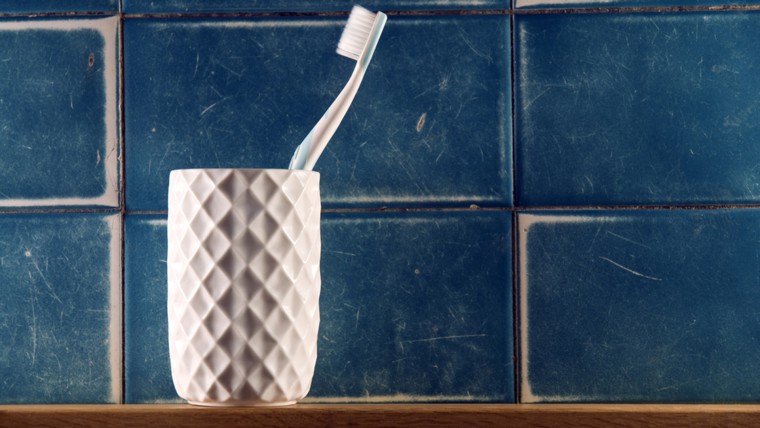We all know to clean certain things in our homes regularly — the kitchen sink, toilet, floors — but there are five items around the house that you might have overlooked.
If you don't clean these items, you're not only allowing pesky germs to thrive, but in the case of appliances, you are also affecting their performance.
Here’s a list of the five items, along with a guide on how to clean them and how often to do it.
1. How to clean a toothbrush holder
Turns out, your toothbrush holder is one of the germiest places in your home. But don't worry, it's easy to clean toothbrush holders. If you're wondering how to keep a toothbrush holder clean, experts say to try to clean it weekly — or as often as you clean your toilet.
- Rinse the toothbrush holder with hot water.
- Use a small bristle brush or pipe cleaner to scrub the inside of the toothbrush slots.
- Fill the holder with antibacterial mouthwash and let sit for several minutes.
- Rinse with clean water and let air dry before reloading your toothbrushes.
2. How to clean a coffee maker with vinegar
If you find yourself with the urge to Google: How to clean my coffee maker, there's no need. We've got you covered. Give your coffee maker a thorough cleaning once a month. Hard-water minerals can build up in its inner workings, which can not only affect the taste of your joe, but also slow down its brewing time. Distilled white vinegar should do the trick.
- Fill the machine’s reservoir with equal parts vinegar and water and place a paper filter in the machine’s basket.
- Brew the solution halfway.
- Turn off the machine and let it sit for 30 minutes.
- Turn the machine back on and finish brewing.
- Pour out the solution, replace the filter and run clean water through the machine two more times.
3. How to clean an iron
Cleaning your iron is not necessary unless the bottom plate shows wear or staining. If your iron looks like it needs a cleaning, try this method before you replace it.
- Empty any stagnant water from the iron’s reservoir (you should do this after every time you use it).
- Make a paste of 1 tablespoon water and 2 tablespoons baking soda.
- Spread the past on the bottom of the iron, then wipe it clean with a damp cloth.
- Dip a cotton swab in distilled water and clean the iron’s steam vents.
- Fill the iron’s reservoir with equal parts distilled water and vinegar.
- Turn the iron on steam and iron a thick cotton cloth (a dishtowel will do) for approximately five minutes. Dump the remaining liquid from the reservoir and wipe the iron’s plate with a clean towel.
Note: Newer irons often have built-in, self-cleaning systems that flush out loose mineral deposits and an anti-calc feature that removes impurities.
4. How to clean the dishwasher
Clean your dishwasher monthly to prevent a buildup of germs and maintain the efficiency of your appliance — you want to make sure your dishes are actually clean!
- Pour vinegar into a dishwasher-safe cup, then place the cup upright on an empty top rack.
- Run a full cycle using the hot-water setting.
- Next, deodorize the machine by sprinkling a cup of baking soda on the bottom of the tub and running the dishwasher on a half cycle with hot water.
- Leave your dishwasher door open for a few hours afterward to air it out.
5. How to clean pillows
You should wash your pillows two to four times a year to get rid of the buildup of skin cells, dust mites and moisture. Down and fiberfill pillows can go in your washer, but foam pillows cannot (clean foam pillows by using the upholstery attachment on your vacuum cleaner).
- Wash pillows in your washing machine on the gentle cycle in hot water using a mild liquid detergent (powder and leave residue). Wash two regular-size pillows together to balance the load (king-size ones should go one at a time).
- Run pillows through the rinse cycle twice.
- Place pillows in the dryer along with two clean tennis balls and set on low heat. Polyester or cotton-filled pillows take one to two hours to dry. Down requires two to three hours, sometimes longer. To prevent overheating, remove the pillow regularly, fluff and return.
It’s imperative to dry down pillows completely to prevent mold and mildew from growing. After two hours, remove them from the dryer, let cool, then squeeze several spots on the pillows between two fingers. If there is any moistness or clumps, return them to the dryer.
This article was originally published on Feb. 16, 2016.




